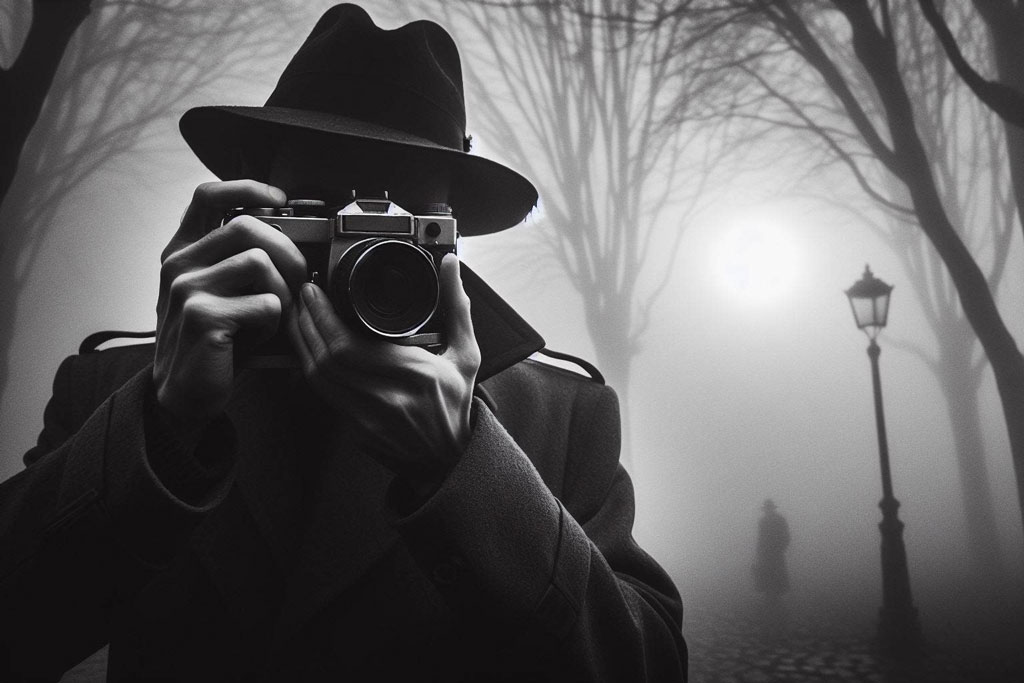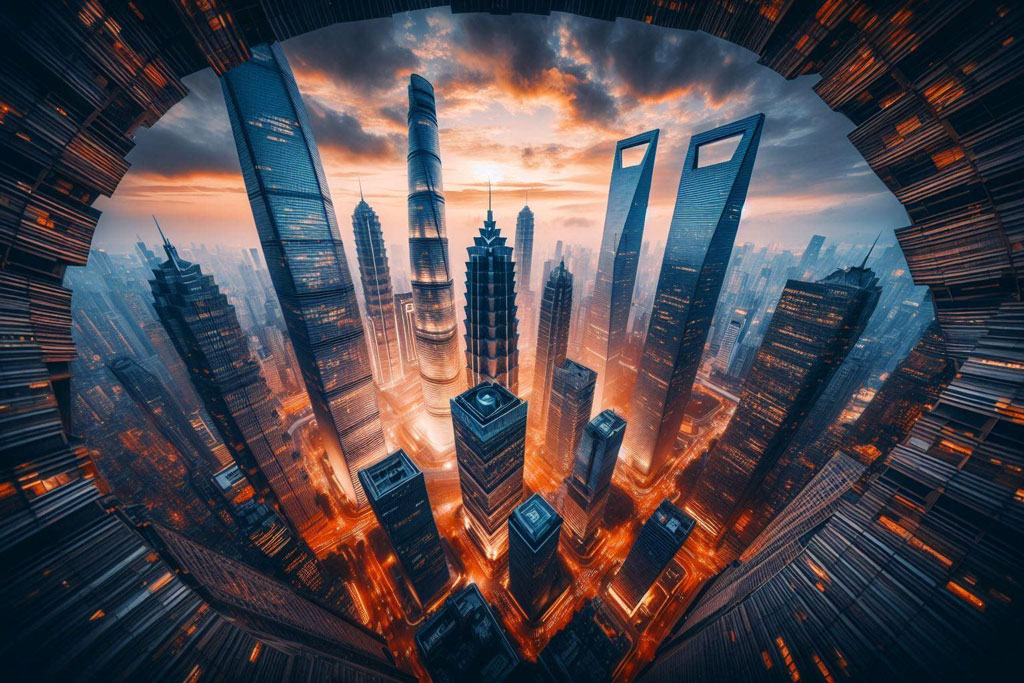Photographing fog and mist is an enchanting endeavor that invites photographers to explore the ethereal beauty of atmospheric conditions. In this guide, we’ll delve into the art of capturing these elusive elements, from understanding their characteristics to mastering creative composition techniques and post-processing methods. Whether you’re a seasoned photographer seeking to enhance your skills or a newcomer eager to immerse yourself in the mystique of fog and mist, join us on a journey to unlock the secrets of captivating imagery in the midst of nature’s veiled allure.
Table of Contents
01. Understanding fog and mist
Photographing fog and mist can result in stunning and ethereal images, but it requires an understanding of these atmospheric conditions to capture their full beauty. Fog and mist are both composed of water droplets suspended in the air, but they differ in density and visibility. Fog is denser and reduces visibility to less than 1 kilometer, while mist is lighter and allows for visibility of up to 2 kilometers. Understanding the characteristics of fog and mist is crucial for planning your shoot and achieving the desired results.
02. Plan Your Shoot
When photographing in fog and mist, careful planning is essential to make the most of these unique conditions. Consider the weather, gear, location, and exposure settings to ensure successful and captivating photographs.
Weather
Monitoring weather conditions is key to capturing fog and mist at their best. Fog often forms when warm, moist air comes into contact with cooler air, leading to condensation and the formation of water droplets. Early mornings and late evenings are prime times for foggy conditions, as temperature differentials are more pronounced during these times. Keep an eye on weather forecasts and be prepared to head out early or stay late to catch the fog at its peak.
Gear
Choosing the right gear is crucial for photographing in fog and mist. Opt for weather-sealed cameras and lenses to protect against moisture, as fog and mist can quickly dampen equipment. A sturdy tripod is essential for stability, especially in low light conditions common with fog and mist. Consider using a lens hood to minimize lens flare caused by moisture droplets, and don’t forget to bring lens cleaning supplies to keep your gear clear of condensation.
Location
Selecting the right location is key to capturing compelling images in fog and mist. Look for areas with interesting features such as trees, buildings, or bodies of water that can add depth and texture to your photographs. Coastal areas, forests, and valleys are prime locations for fog and mist photography, as these areas are more likely to experience atmospheric conditions conducive to their formation. Explore different vantage points and perspectives to find unique compositions that showcase the beauty of fog and mist.
Exposure
Adjusting exposure settings is crucial for capturing the mood and atmosphere of fog and mist. In low light conditions, such as those often associated with fog and mist, use a wide aperture to allow more light into the camera and maintain faster shutter speeds to prevent motion blur. Experiment with different exposure compensation values to achieve the desired level of brightness and contrast in your images. Consider using manual mode to have full control over exposure settings and fine-tune them to suit the specific conditions of your shoot.
03. Camera settings
When venturing into fog photography, mastering your camera settings is crucial to capturing the ethereal beauty of misty landscapes. Here’s a breakdown of essential camera settings to consider:
- Aperture: Opt for a wide aperture (lower f-stop number) to allow more light into the camera and maintain faster shutter speeds, especially in low light conditions typical of foggy environments. A wide aperture also helps create a shallow depth of field, which can add a sense of depth and dimension to your images.
- Shutter Speed: Use faster shutter speeds to freeze any motion and prevent blur, particularly if you’re capturing scenes with moving elements such as trees or water droplets in the fog. However, be mindful not to use excessively fast shutter speeds that may darken the overall exposure of your image.
- ISO: In foggy conditions where light may be diffused and subdued, consider increasing your ISO to achieve a proper exposure without compromising image quality. However, be cautious not to raise the ISO too high, as this can introduce noise and grain into your photos.
- Exposure Compensation: Experiment with exposure compensation to adjust the brightness of your images and achieve the desired level of exposure. Since fog tends to soften and diffuse light, you may need to increase exposure compensation slightly to prevent your images from appearing underexposed.
- White Balance: Pay attention to white balance settings to ensure accurate color representation in your foggy photos. Depending on the prevailing lighting conditions, you may need to adjust the white balance to neutralize any color casts caused by the fog, such as cool blue tones or warm orange hues.
- Focus: In foggy environments where visibility may be limited, use manual focus or autofocus with caution. Consider focusing on prominent objects or landmarks within your composition to ensure sharpness and clarity in your images. Alternatively, experiment with selective focus techniques to create a sense of depth and mystery in your fog photography.
04. Creative Composition
When photographing fog and mist, creative composition techniques can elevate your images from ordinary to extraordinary. Experimenting with different composition techniques allows you to capture the mood and atmosphere of fog and mist in unique and compelling ways.
In-Camera Layering
In-camera layering involves incorporating multiple layers of fog and mist into your composition to add depth and dimension to your images. Look for scenes with varying degrees of fog density, such as distant objects partially obscured by thick fog in the foreground. Use leading lines and framing techniques to guide the viewer’s eye through the layers of mist and create a sense of depth in your photographs.
Multiple Exposure
Multiple exposure is a creative technique that allows you to blend two or more images together in-camera to create a single composite image. Experiment with multiple exposure modes on your camera to combine different elements of fog and mist with other subjects, such as trees, buildings, or landscapes. This technique can result in dreamy and surreal images that capture the ethereal beauty of fog and mist.
Silhouetting
Silhouetting is a powerful composition technique that involves capturing the dark outlines of subjects against a bright background, such as fog or mist. Look for strong, recognizable shapes, such as trees or buildings, and position them against the lighter areas of fog or mist to create striking silhouettes. Experiment with different angles and perspectives to find the most dramatic compositions that emphasize the contrast between light and dark.
Contrasting
Contrasting elements in your composition can create visual interest and enhance the mood of your fog and mist photographs. Look for scenes with stark contrasts, such as bright patches of fog against dark backgrounds or colorful objects juxtaposed against the muted tones of fog and mist. Pay attention to the interplay of light and shadow to create dynamic compositions that draw the viewer’s eye and evoke a sense of drama and mystery.
Making it simple
Simplifying your composition involves removing distractions and focusing on the essential elements of your scene to create clean and impactful images. In foggy and misty conditions, visibility may be limited, making it challenging to capture complex scenes with cluttered backgrounds. Look for minimalist compositions with strong focal points that stand out against the soft, diffused light of fog and mist. Experiment with negative space and minimalistic compositions to create images that convey a sense of serenity and tranquility.
05. Post-process Photos
Post-processing is an essential step in bringing out the full potential of your fog and mist photographs. By carefully editing your images, you can enhance their mood, atmosphere, and visual impact.
Experiment with adjustments to exposure, contrast, and saturation to fine-tune the overall look and feel of your images. Pay attention to the subtle details of fog and mist, such as texture and color, and use selective editing techniques to bring out their natural beauty.
Consider adding creative effects, such as vignetting or color grading, to enhance the mood and atmosphere of your fog and mist photographs. Experiment with different presets and filters to find the perfect look for your images, but be mindful not to over-process or manipulate them excessively.
Photographing fog and mist offers a unique opportunity to create captivating and atmospheric images. By understanding the characteristics of these atmospheric conditions and planning your shoot accordingly, you can capture stunning photographs that evoke a sense of mystery and beauty. Stay tuned for part two, where we’ll delve deeper into composition techniques and post-processing tips for enhancing your fog and mist photographs.



